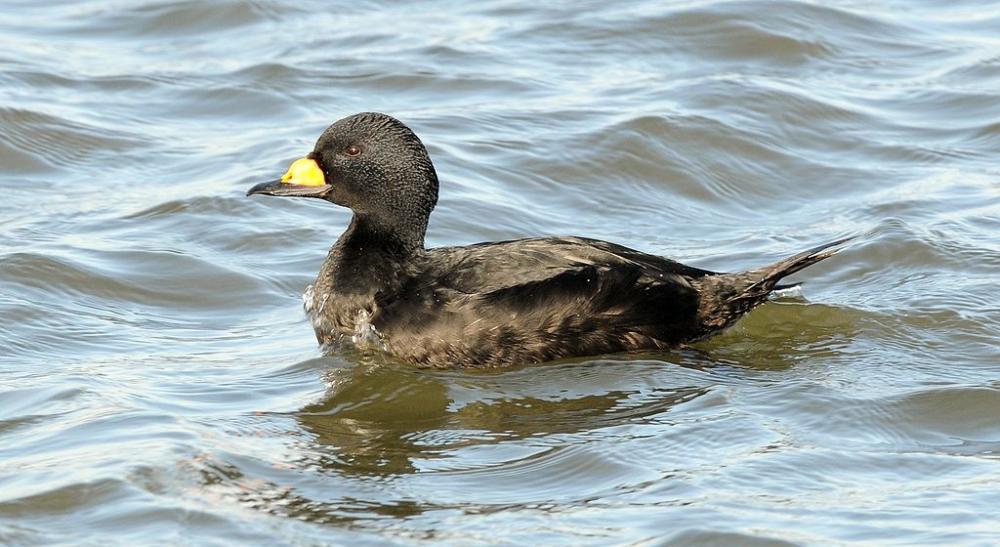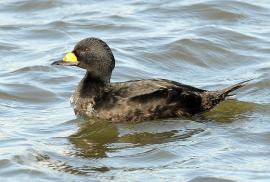Guide to Boreal Birds
Overview
Scoters are gregarious, and the three species often feed together, gathering over submerged reefs where mollusks, barnacles, chitons, and limpets abound. Newly hatched young remain on fresh water for several days, feeding on small freshwater mussels and the larvae of aquatic insects before moving to salt water. The Black Scoter is the least common of the three in North America, numbering about 500,000; it is more numerous and deserving of its former name, "Common Scoter," in parts of Eurasia.
Description
17-21" (43-53 cm). Male black; bill black with large yellow knob at base. Female duller, with pale cheeks and all-dark bill. Both sexes show silvery wing linings in flight.
Voice
In spring a musical whistled cour-loo.
Nesting
5-8 pale buff eggs in a down-lined cup of grass hidden in a rock crevice or clump of grass near edge of water.
Habitat
Breeds on ponds in boreal forests; winters on oceans and in large saltwater bays.
Range/Migration
Breeds in western Alaska, Labrador, and Newfoundland. Winters along coasts from Alaska south to California, from Newfoundland south to Carolinas, along portions of Gulf Coast, and on Great Lakes. Also in Eurasia.



